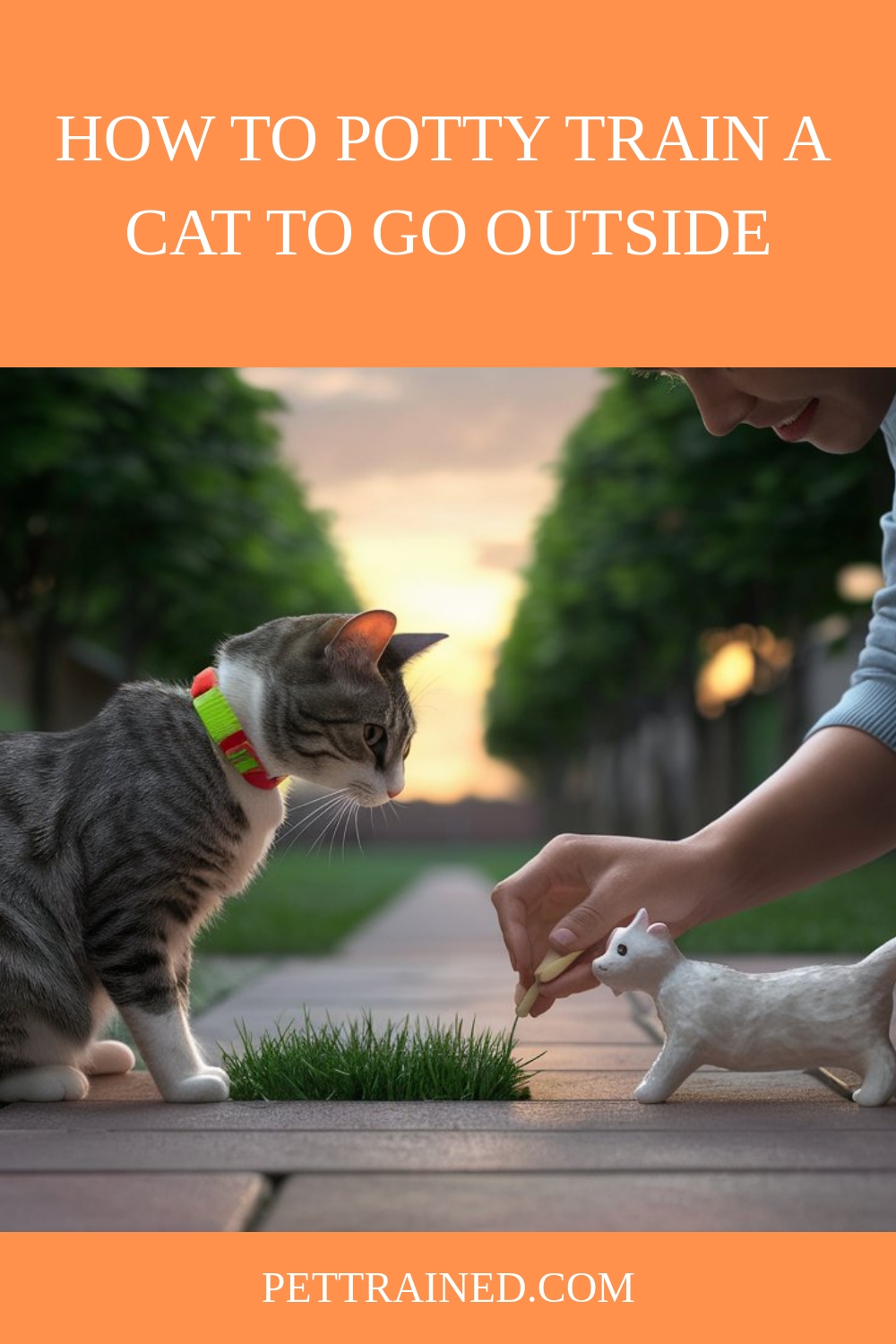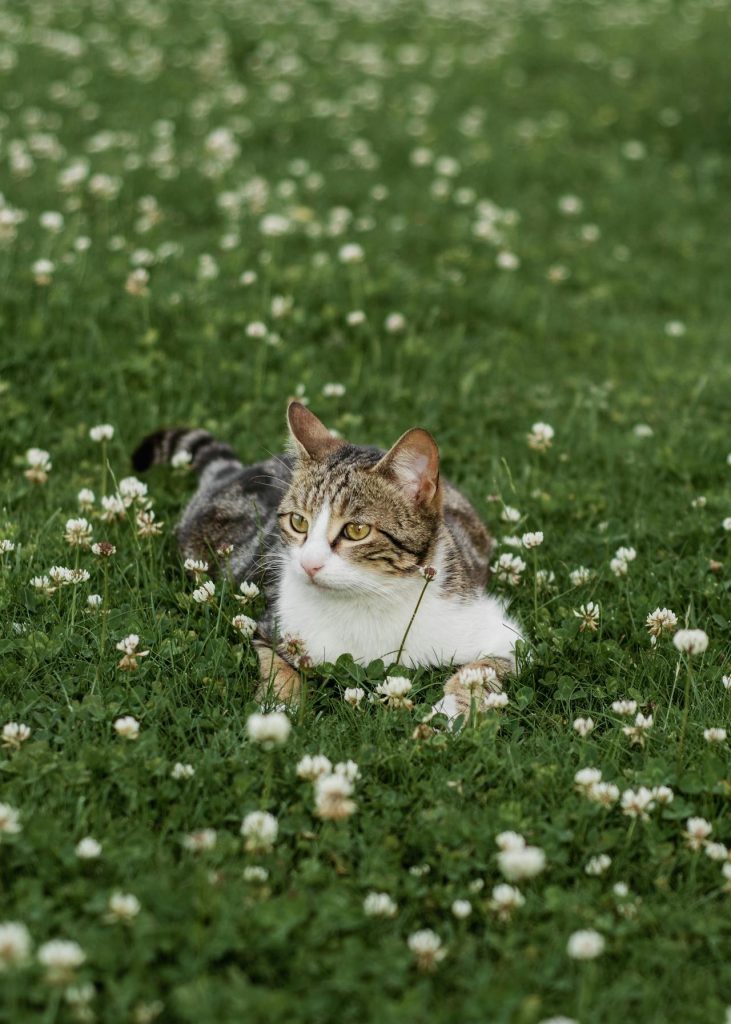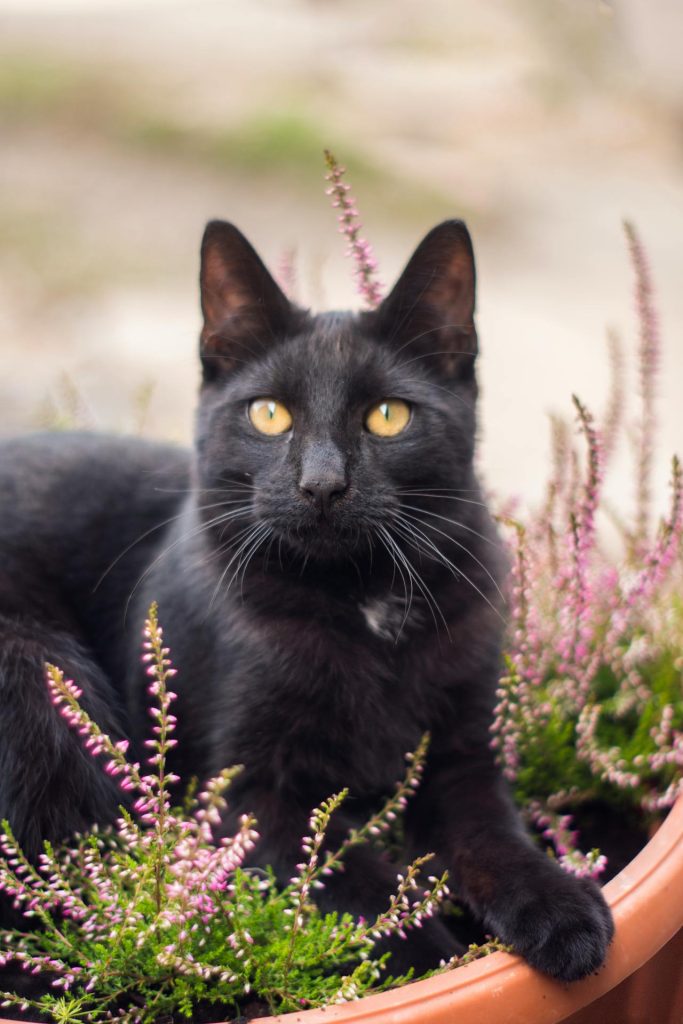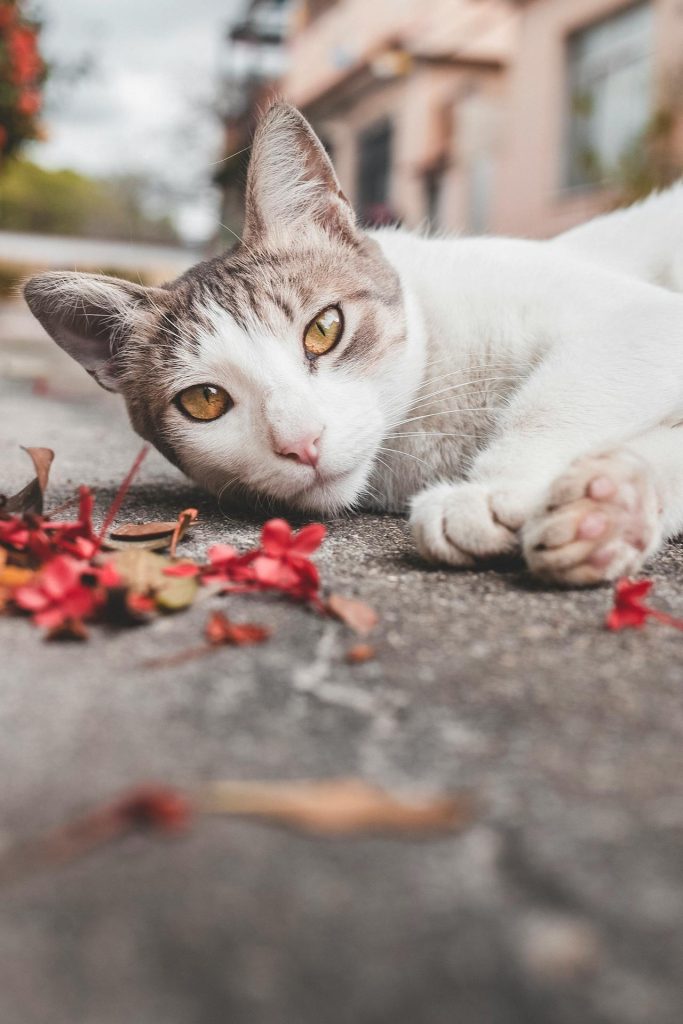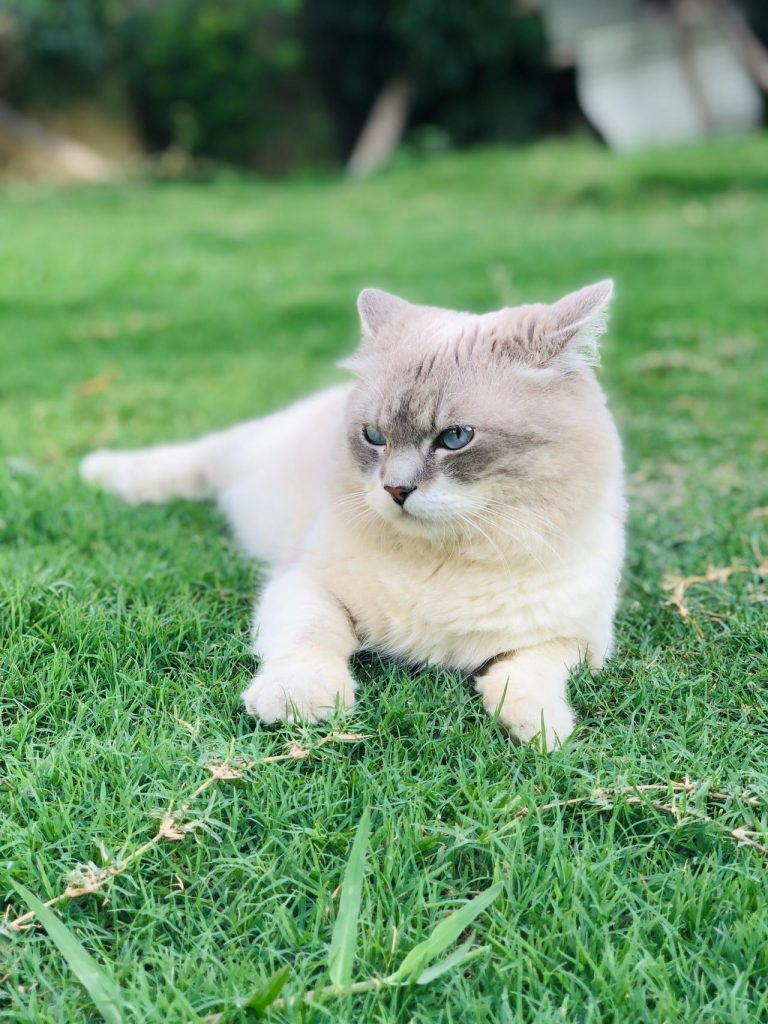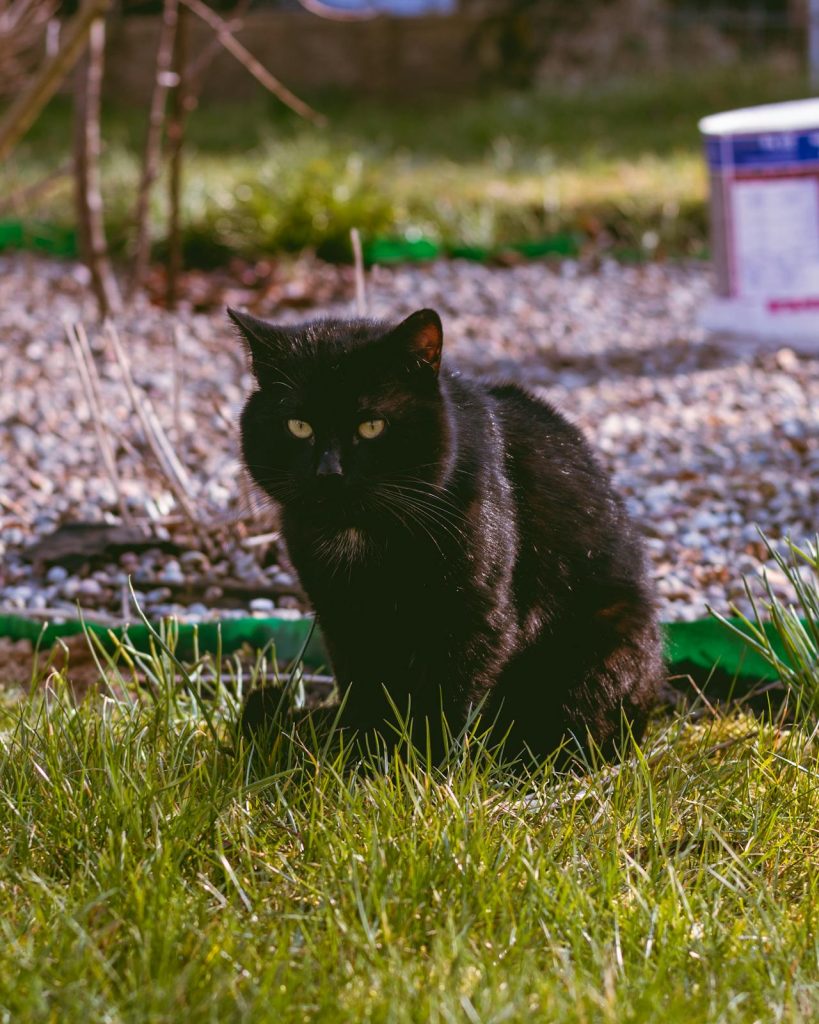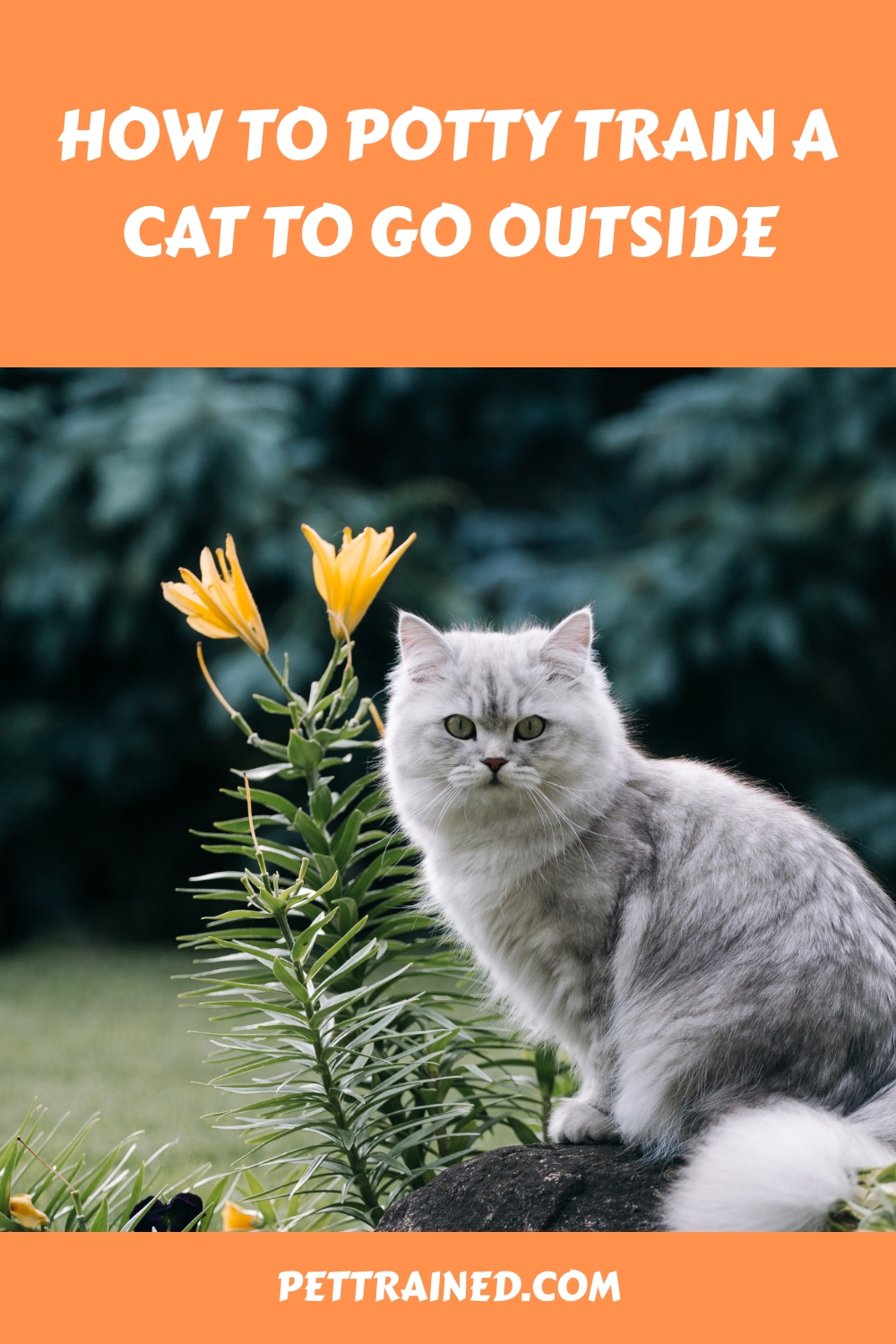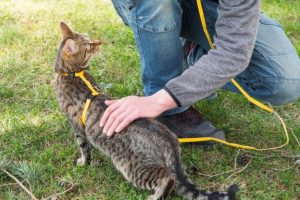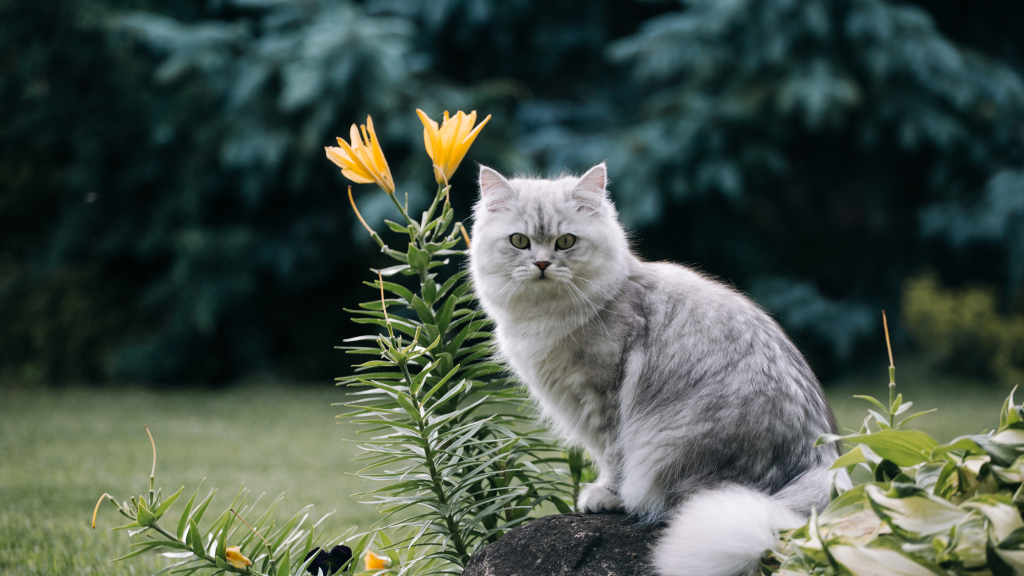
To potty train your cat to go outside, start by evaluating their readiness between 3-6 months of age. Observe their elimination habits, physical abilities, and behavioral cues, such as sniffing, circling, pacing, and vocalizations. Next, choose a safe outdoor location free from hazards, accessible, and comfortable for your cat. Establish a routine that includes regular feeding times, play, and outdoor access to create a potty training schedule. By following these steps, you’ll set the stage for successful outdoor training. As you progress, you’ll discover the importance of positive reinforcement techniques and managing accidents to achieve reliable results.
Table of Contents
Key Takeaways
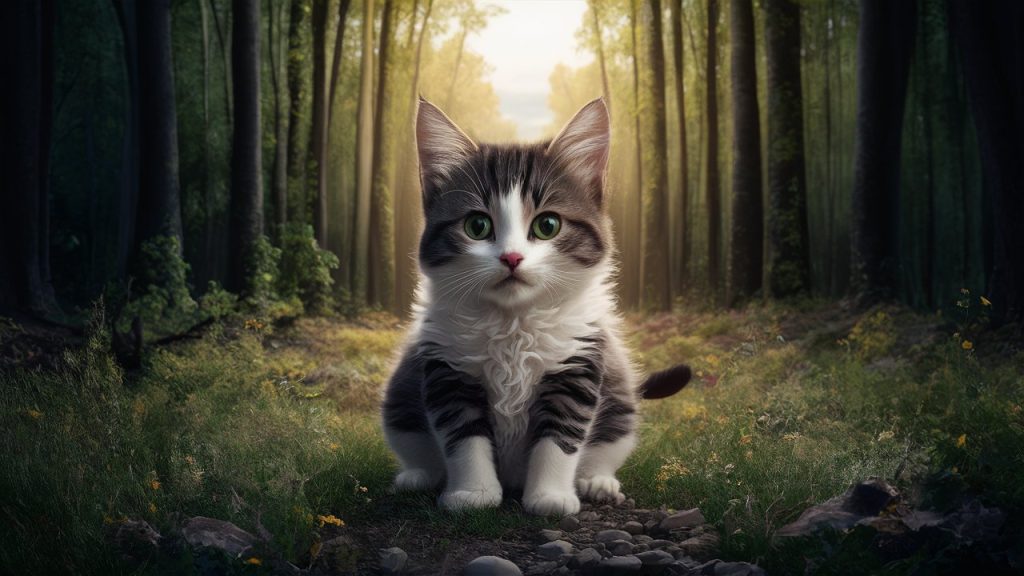
- Assess your cat’s readiness for outdoor potty training between 3-6 months, observing elimination habits and interest in the litter box.
- Choose a safe outdoor location free from hazards, standing water, and odors, with accessibility and comfort for your cat.
- Establish a potty training schedule with regular outdoor breaks after meals or playtime, adjusting the schedule as needed.
- Use positive reinforcement techniques, such as clicker training and rewards for outdoor elimination, to build trust and consistency.
Assess Your Cat’s Readiness
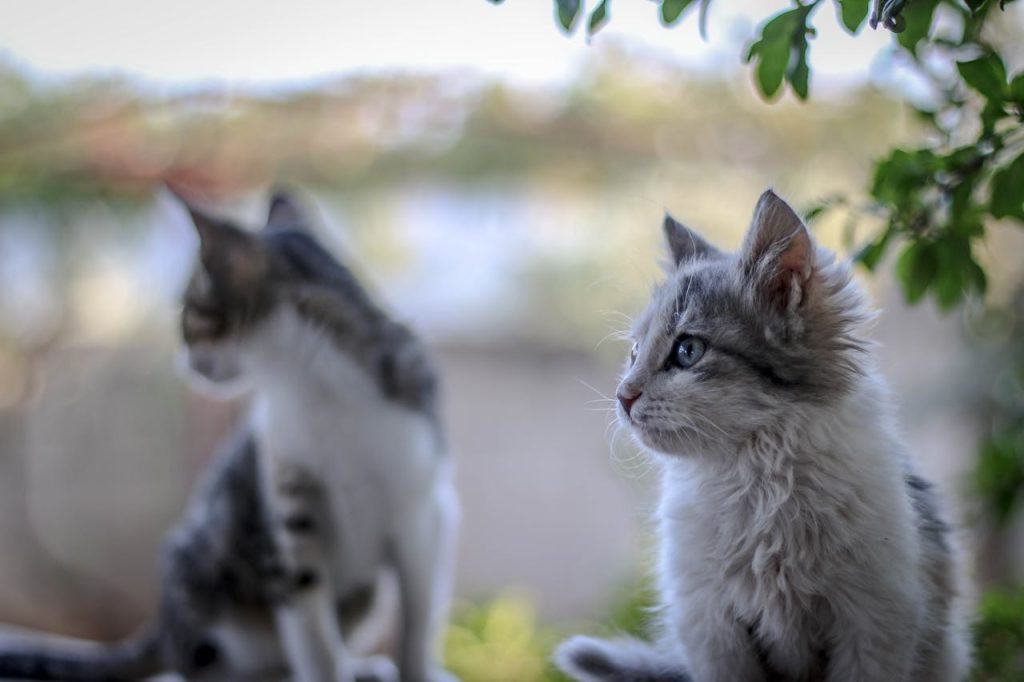
To determine whether your cat is ready for potty training, you must first assess its physical and behavioral development, ideally when it reaches 3-6 months of age.
At this stage, you can identify readiness signs that will help you gauge your cat’s ability to learn and adapt.
Observe your cat’s behavior, particularly its elimination habits. Does it show interest in the litter box or a specific area for elimination?
Does it exhibit digging or covering behavior after eliminating? These signs indicate that your cat is developing instinctual behaviors associated with eliminating, which is a vital readiness sign.
This post contains affiliate links. However all the information provided on this site are my own honest opinions. See more in Disclaimer.
Additionally, assess your cat’s physical development. Can it walk, run, and jump with ease? Does it have good balance and coordination?
If your cat demonstrates these physical abilities, it’s likely ready to navigate outdoor environments.
By evaluating these cat behavior and readiness signs, you can determine whether your cat is prepared for potty training.
If you notice any of these signs, it’s time to start training your cat to go outside.
Keep in mind that every cat is different, and some may take longer to develop than others.
Choose the Right Outdoor Location
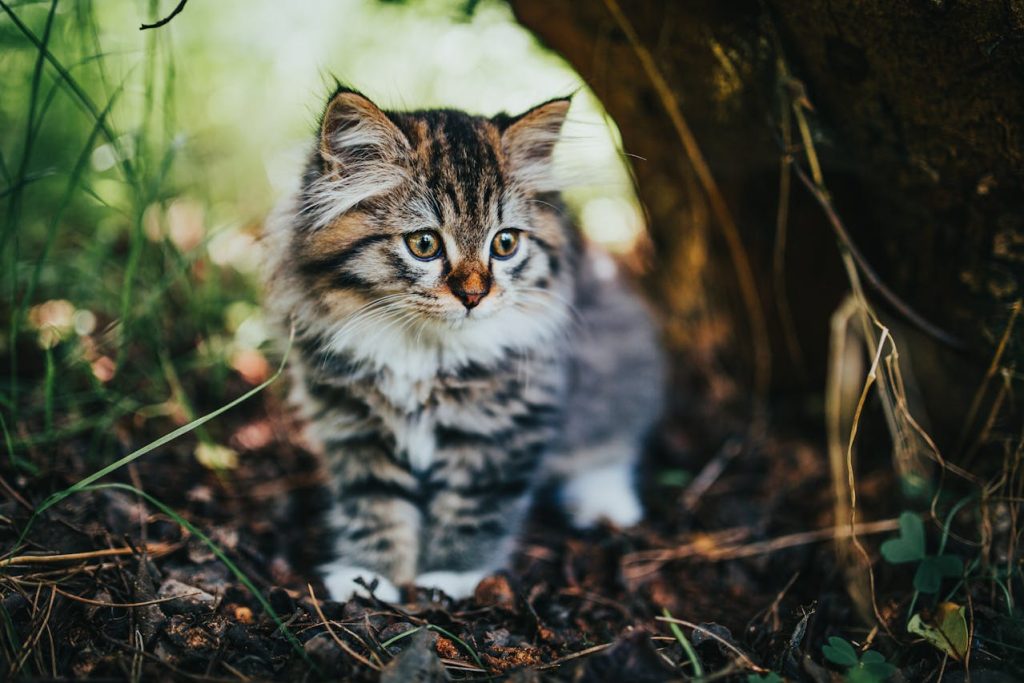
As you prepare to take your cat outside for potty training, you’ll need to select a suitable location that balances safety and accessibility.
You should choose a spot that’s easily reachable and free from hazards, such as toxic plants, sharp objects, or other animals that might stress your cat.
Safety and Accessibility
Beyond proximity to your home, the outdoor location you choose for your cat’s potty training area should also prioritize accessibility and minimize hazards to guarantee your cat’s safe passage and use.

You’ll want to assess the area for potential outdoor hazards, such as toxic plants, sharp objects, and wildlife.
Confirm that the location is easily accessible for your cat, with a clear path to the designated potty area.
When evaluating environmental factors, consider the terrain, weather conditions, and sunlight exposure.
A flat, well-drained surface is ideal, as it will reduce the risk of accidents and make cleanup easier.
Avoid areas with standing water or where water tends to collect, as this can attract pests and create unpleasant odors.
In addition, choose a location that provides some shade, especially during peak sun hours, to prevent overheating and discomfort.
Suitable Outdoor Spots
Selecting a suitable outdoor spot for your cat’s potty area requires careful consideration of several key factors, including the location’s drainage, sunlight, and proximity to potential distractions.
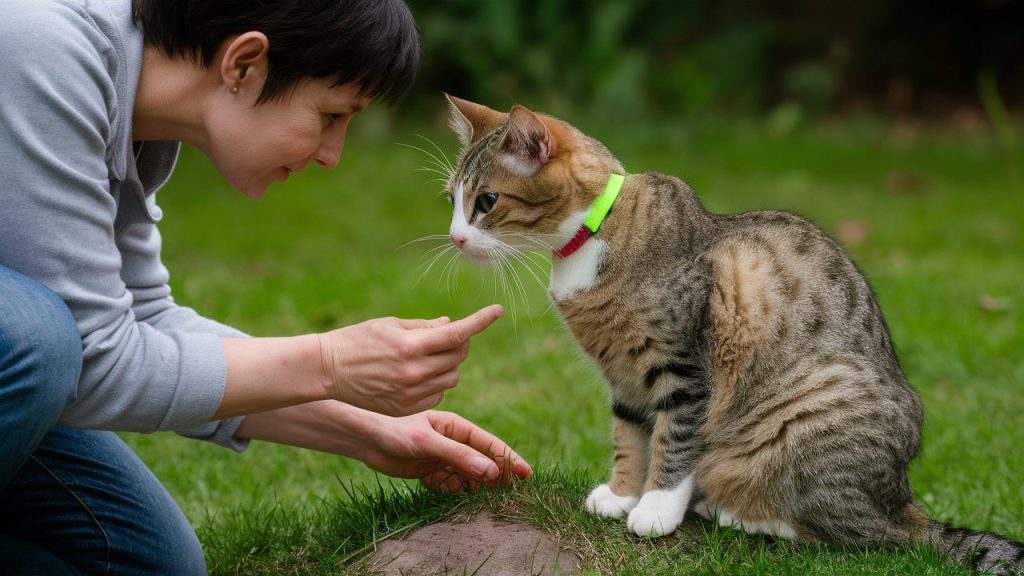
You’ll want to choose a spot that’s well-drained to prevent water from accumulating and making the area uncomfortable for your cat.
Additionally, select a location that receives partial shade to full sun, depending on your cat’s preferences.
When evaluating the outdoor environment, consider the types of surfaces and substances your cat will encounter.
You may need to provide litter alternatives, such as sand, soil, or wood chips, to create a comfortable and familiar surface for your cat.
Avoid areas with toxic plants or substances that could harm your cat if ingested.
Observe your cat’s behavior and preferences to determine the most suitable location. If your cat is easily distracted, choose a quiet, secluded spot.
If your cat enjoys exploring, select an area with varied textures and smells.
Create a Potty Training Schedule
To create a successful potty training schedule for your cat, you’ll need to establish routine times for feeding, play, and outdoor access.
This schedule will help you gradually shift your cat to using the outdoors for its waste elimination, allowing you to monitor its progress and make adjustments as needed.
Establish Routine Times
When potty training your cat, establishing a strict schedule with set times for feeding, play, and elimination will help regulate your cat’s bowel movements and make the training process more efficient.
As you create a potty training schedule, consider your cat’s outdoor potty preferences, such as the time of day and location they prefer to eliminate.
Incorporate these preferences into your schedule to increase the chances of successful potty training.
For example, if your cat typically eliminates in the morning and evening, schedule outdoor potty breaks during these times.
Also, take note of your cat’s feeding schedule, as cats often eliminate shortly after eating.
Trending in Cats:
By coordinating feeding and potty break times, you can maximize the effectiveness of your potty training efforts.
Effective potty training tips include consistently adhering to your schedule and closely monitoring your cat’s behavior to make adjustments as needed.
Gradual Outdoor Transition
As you begin the gradual outdoor change, create a potty training schedule that outlines specific times for supervised outdoor trips, allowing you to gradually increase your cat’s freedom while minimizing the risk of accidents.
Start by designating specific times for outdoor potty breaks, such as immediately after meals or playtime.
Take your cat to the same designated area each time to create a connection between the location and the activity.
Begin with short, supervised trips, and gradually increase the duration as your cat becomes more reliable.
Monitor your cat’s behavior and adjust the schedule as needed to account for environmental factors like weather, humidity, and daylight hours.
If you notice any signs of stress or anxiety, such as panting or pacing, it’s best to slow down the change process.
Use Positive Reinforcement Techniques
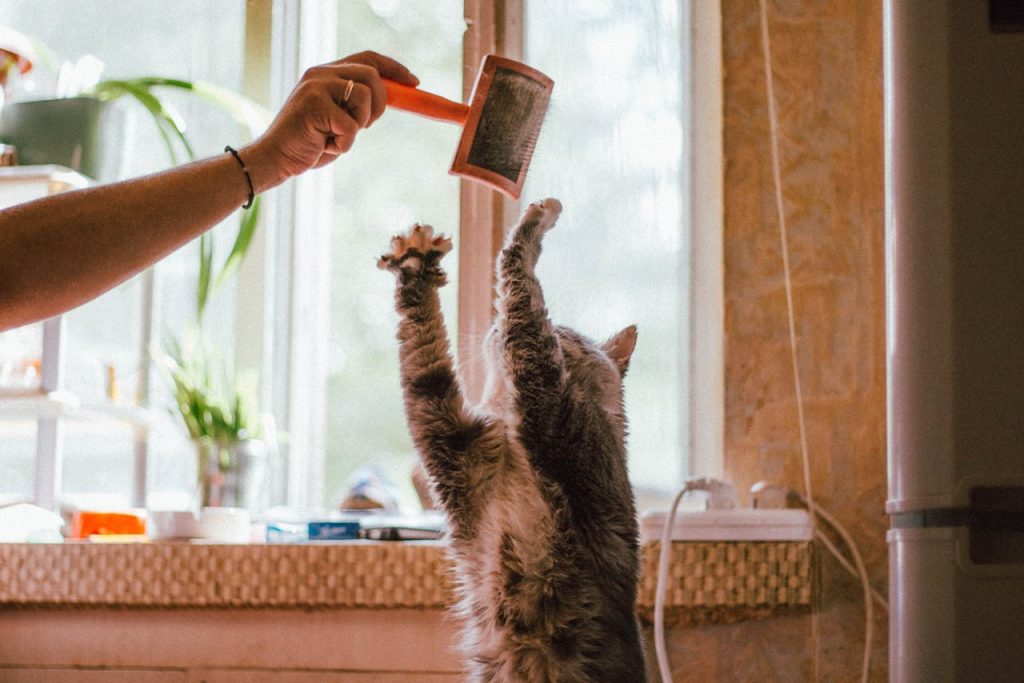
Positive reinforcement techniques are a crucial component of successful cat potty training, allowing you to encourage desired behavior while discouraging undesired actions.
You’ll want to focus on rewarding your cat for eliminating outside, rather than punishing them for accidents indoors.
One effective method is clicker training, where you use a small device to make a distinct sound when your cat performs the desired action.
This sound is immediately followed by a reward, such as a treat.
Some key benefits of positive reinforcement techniques include:
- Improved communication: You’ll develop a clear understanding of what your cat associates with desired behavior.
- Increased trust: Your cat will learn to rely on you for guidance and support.
When using reward treats, choose low-calorie options that won’t interfere with your cat’s regular diet.
You’ll also want to phase out treats as your cat becomes more consistent with eliminating outside.
Watch for Signs and Signals
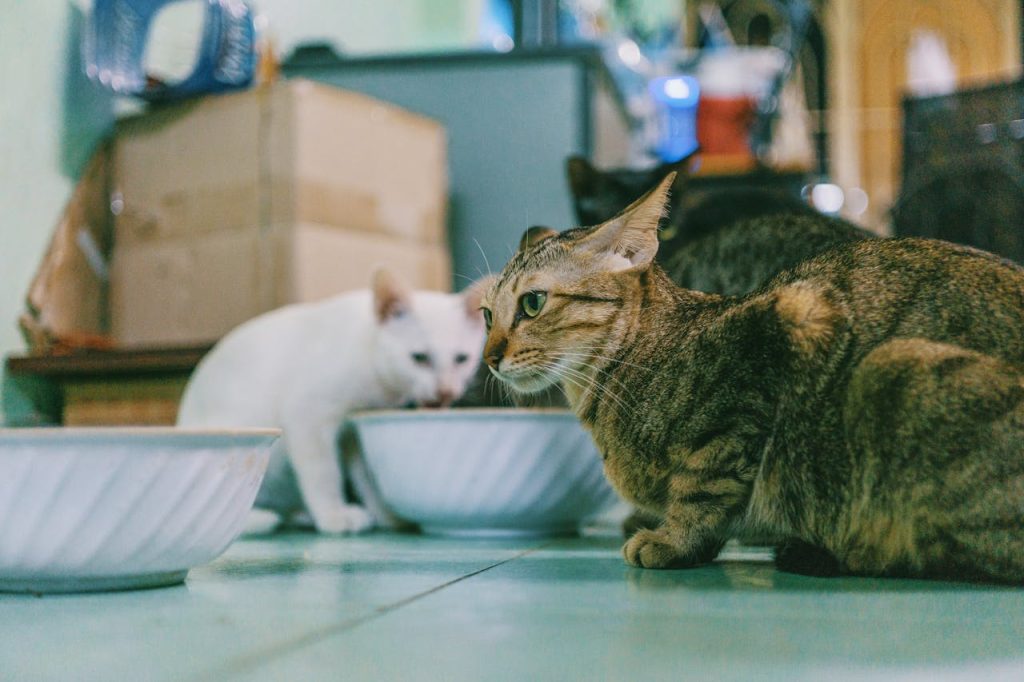
Your observation skills play a vital role in successful cat potty training, as you’ll need to recognize the subtle cues and body language signals your cat exhibits when they need to eliminate.
By paying attention to these communication cues, you can quickly respond to your cat’s needs and reinforce desired behavior.
| Behavior Observation | Communication Cues |
|---|---|
| Sniffing and circling | Indicates the cat is searching for a suitable location to eliminate |
| Pacing back and forth | Suggests the cat is uncomfortable or unable to find a suitable location |
| Vocalizations or meowing | May indicate the cat needs to eliminate or is seeking attention |
Effective behavior observation allows you to anticipate and react to your cat’s needs, streamlining the potty training process. By recognizing these communication cues, you can redirect your cat to the designated outdoor area, promoting a successful and accident-free experience. Remember, attentive observation is essential for successful cat potty training.
Handle Accidents and Setbacks
Despite careful observation and timely intervention, accidents will inevitably occur during the cat potty training process, requiring prompt attention and effective management to prevent setbacks and reinforce desired behavior.
You’ll need to develop accident management strategies to address these incidents and get your cat back on track. When accidents happen, it’s crucial to remain calm and composed. Avoid punishing or scolding your cat, as this can create negative associations and undermine the training process.
Instead, focus on the following:
- Clean up accidents properly: Use a neutral-smelling cleaner to remove any remaining scent that might attract your cat to the same spot again.
- Reinforce desired behavior: Reward your cat for using the designated potty area or showing interest in going outside.
Gradually Increase Outdoor Freedom
As the cat becomes more reliable with using the designated potty area, it’s essential to start introducing more outdoor freedom in a controlled and gradual manner.
You’ll want to give your cat more autonomy to make choices and explore the outdoors.
This increased feline independence allows your cat to take ownership of its outdoor exploration and learn to make better decisions about where to go potty.
Start by allowing your cat to spend more time outdoors under your direct supervision. Watch as it explores its surroundings and take note of any areas it tends to favor for going potty.
Gradually increase the amount of time spent outdoors, but only if your cat continues to demonstrate responsible behavior. As your cat becomes more comfortable with outdoor exploration, you can start to phase out supervision, allowing your cat to come and go as it pleases.
Remember to reward good behavior and address any setbacks promptly.
Frequently Asked Questions
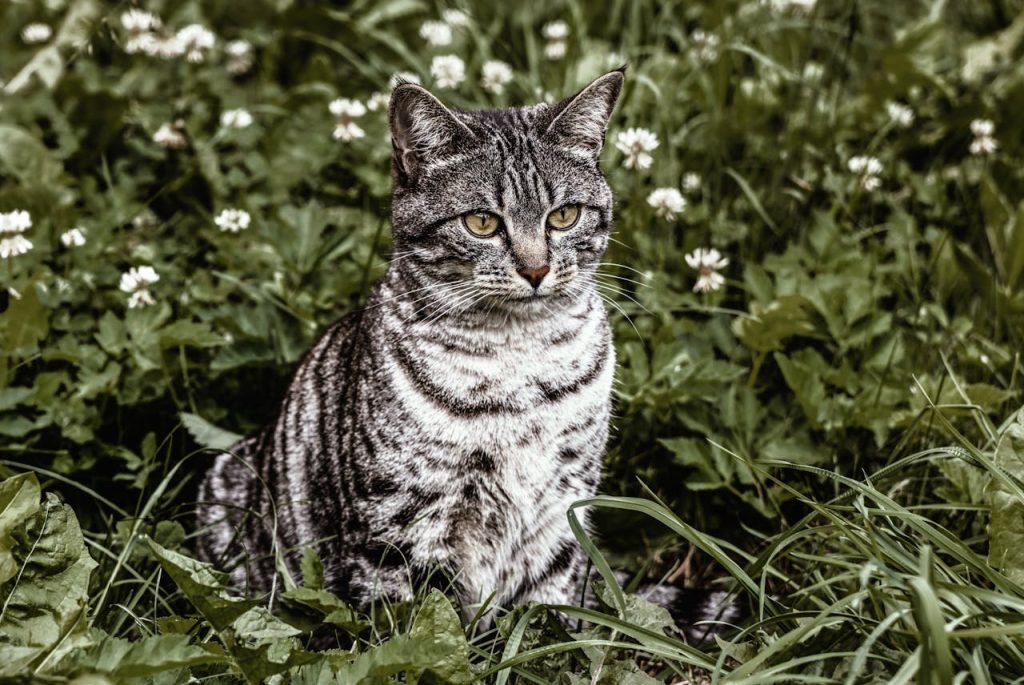
You’re likely to encounter challenges training multiple cats simultaneously due to sibling dynamics. To overcome this, develop distinct training techniques for each cat, allowing you to address individual needs and personalities effectively. Monitor progress closely.
“You’ll need to transform your yard into Fort Knox; think cat-sized barbed wire and a moat. More realistically, you’ll focus on outdoor safety and predator awareness by removing attractants, using deterrents, and supervising outings.”
You’re facing resistance from your cat, so consider indoor alternatives like litter boxes or pads. However, if your cat still refuses, investigate underlying behavioral issues, such as anxiety or medical problems, which may be hindering its willingness.
You’ll likely see changes in your cat’s litter box habits as their outdoor preferences evolve; potty training may lead to less frequent litter box use, but some cats may still use it occasionally or during certain weather conditions.
You can attempt to train a senior cat to go outside, but consider their established habits and potential health limitations; research indicates senior cat behaviors are less adaptable to outdoor bathroom preferences changes.
Conclusion
You’ve successfully potty trained your cat to go outside by following a structured approach.
Research suggests that up to 70% of outdoor cats exhibit improved mental and physical health.
By creating a schedule, using positive reinforcement, and gradually increasing outdoor freedom, you’ve provided your cat with essential skills and a stimulating environment.
Your patience and consistency have paid off, and your cat is now enjoying the benefits of outdoor potty training.
